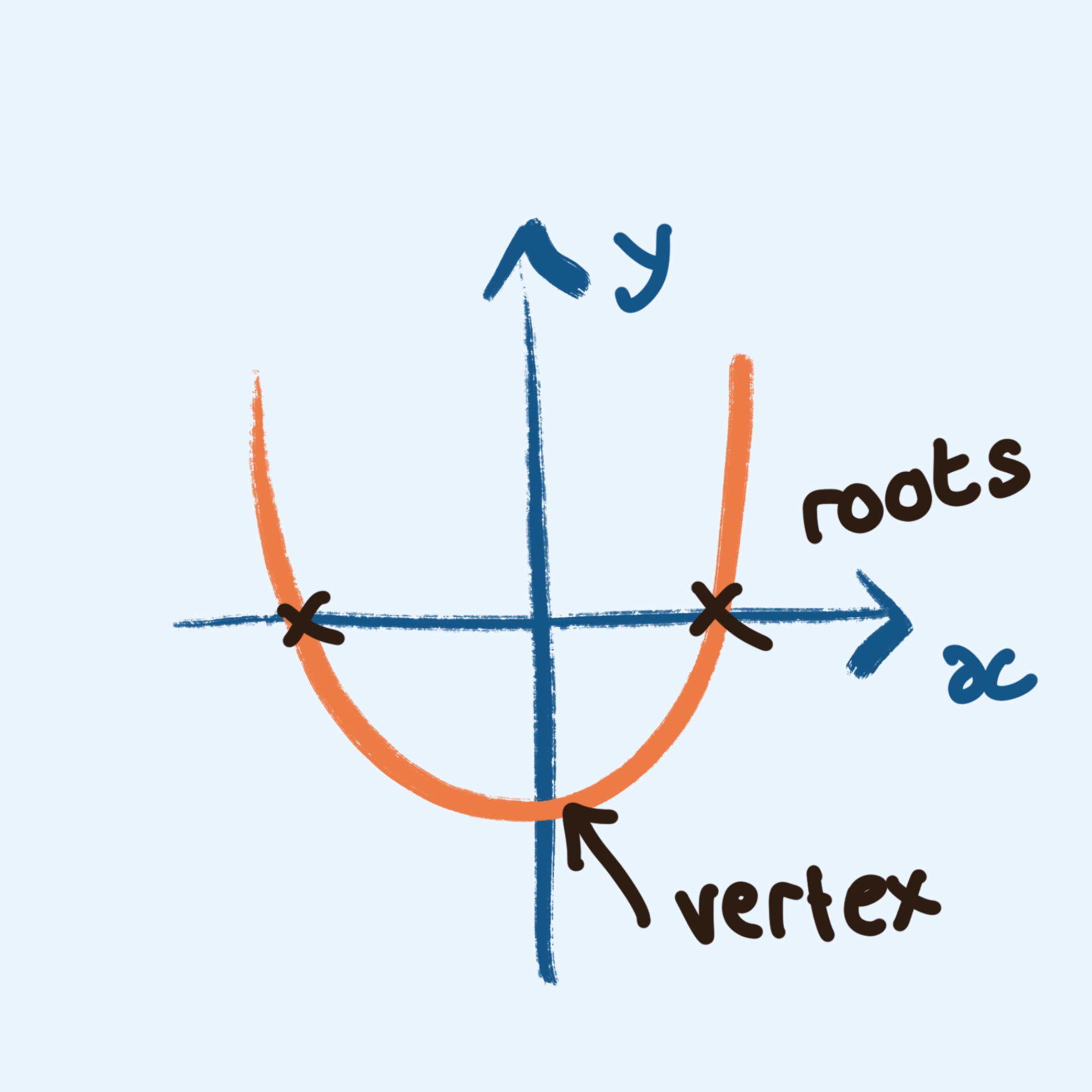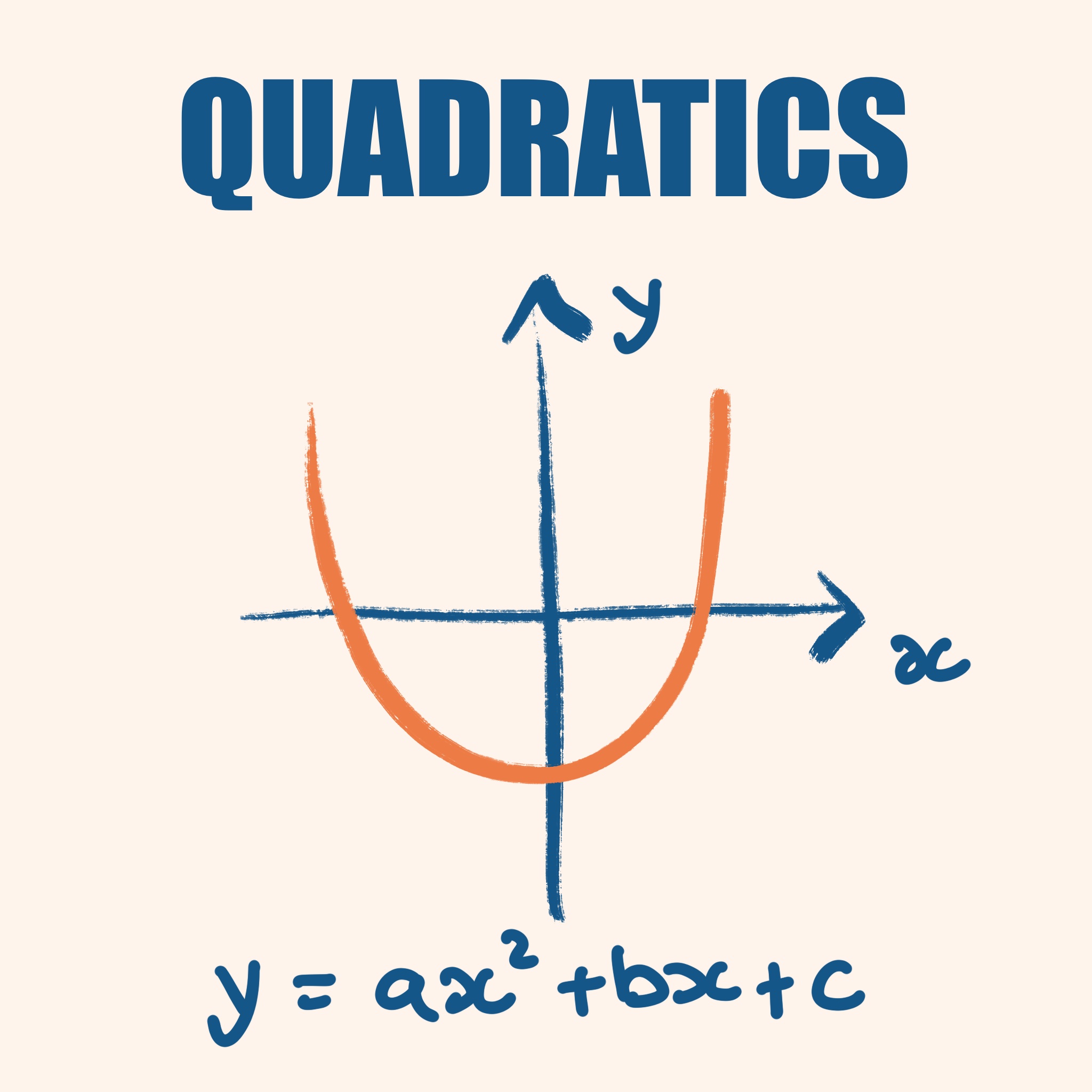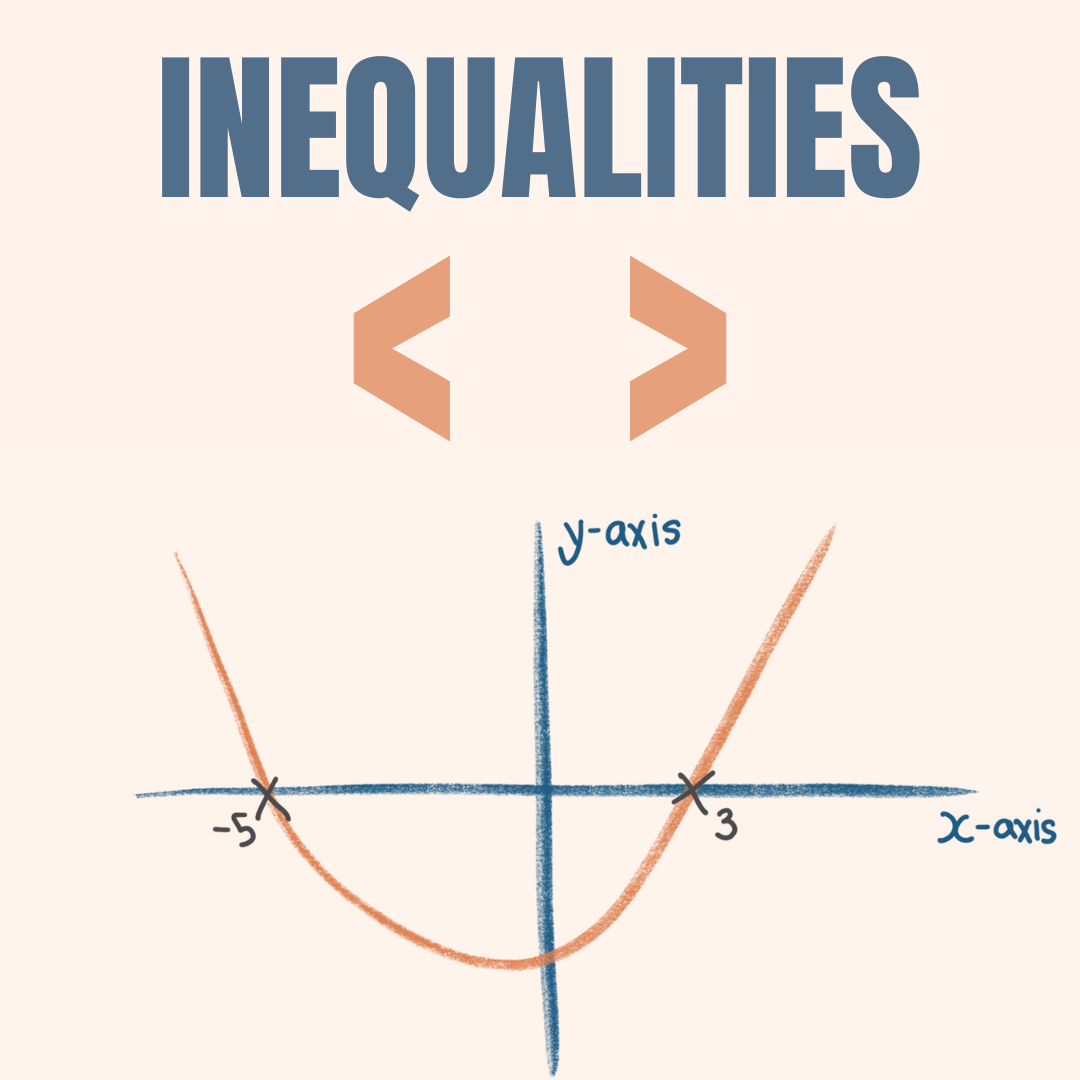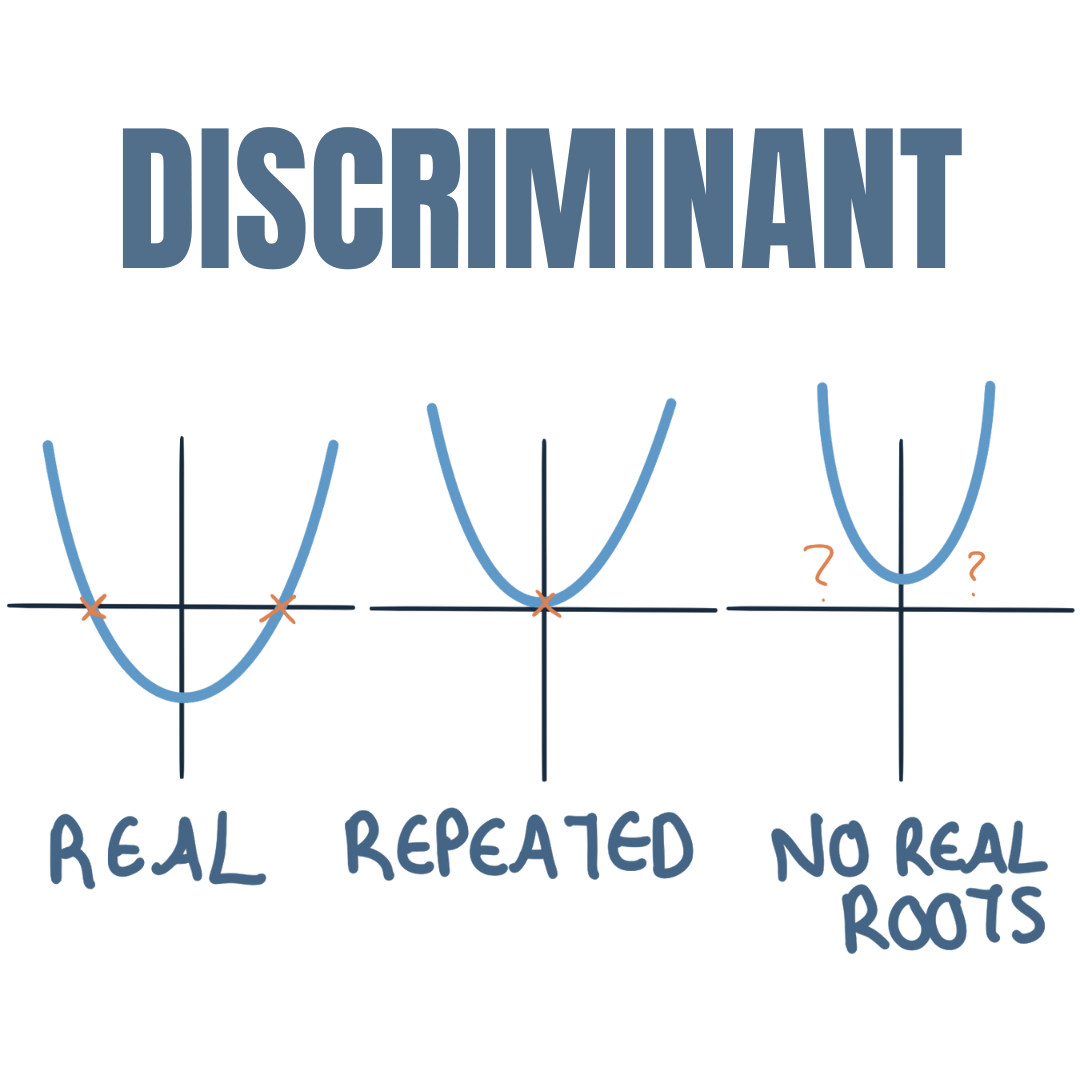Category: Functions and graphs
-

Different forms of the quadratic equation
A quadratic equation can be written in different forms forms: standard, factored, and vertex, each revealing different properties and solutions. Constants a, b, c affect the graph’s shape and position, while r1, r2, and h, k relate to roots and vertex coordinates.
-

What are quadratic equations?
In mathematics, equations like as linear, quadratic, and cubic describe relationships between variables. Quadratic equations have x squared as the highest power. Graphs help us visualize these relationships, and with given x values, y can be determined.
-

How to solve quadratic inequalities
Inequalities use greater than or smaller than signs not an equals sign. How can we solve the equation to determine this range of values?
-

Types of roots (the discriminant)
In quadratic equations, we commonly find the x-intercepts. These values tell us where the graph cuts the x-axis. It is possible to determine what roots the function will have without drawing a graph or solving the equation by using the discriminant.
